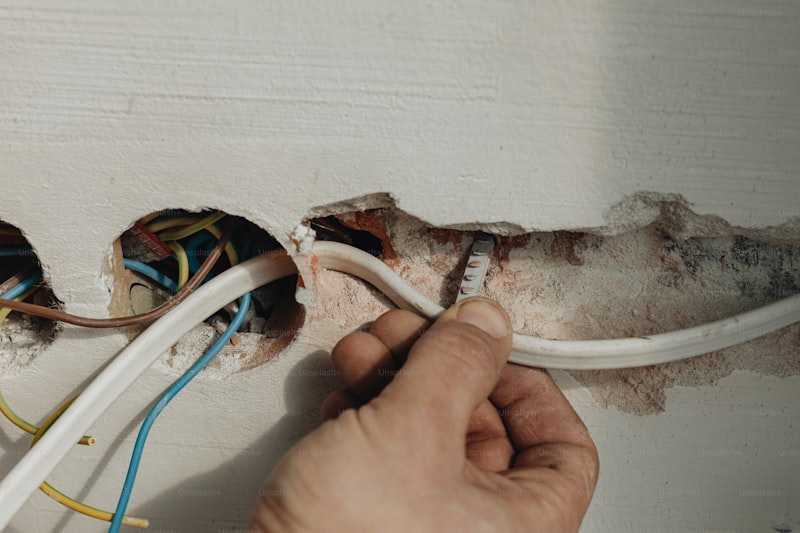Firstly, pinpoint the source of the leak. Transmission fluid leaks often occur at the pan gasket, seals, or fluid lines. Start by inspecting these areas carefully. Clean the transmission and the surrounding parts to identify the exact location of the leak. A flashlight can be helpful for spotting smaller leaks.

Once you’ve located the leak, assess its severity. Minor leaks might only require tightening bolts or replacing a damaged seal. However, significant leaks might necessitate more extensive repairs, such as replacing the transmission pan gasket or the fluid lines.
Before starting repairs, gather the necessary tools and materials: new transmission fluid, replacement gaskets or seals, a socket wrench set, and a jack and jack stands for lifting the car safely.
Begin by draining the old transmission fluid. Use a drain pan to collect the fluid, then remove the transmission pan bolts. Carefully lower the pan to avoid spilling remaining fluid. Replace the old gasket with a new one and reinstall the pan with the bolts tightened securely.
Next, inspect and replace any damaged seals or fluid lines. Worn-out seals can often be pried out and replaced with new ones using a seal puller and some lubricant for easier installation. Ensure all connections are tight to prevent future leaks.
Once all repairs are complete, refill the transmission with the appropriate amount and type of fluid as recommended by your vehicle’s manufacturer. Start the engine and check for leaks while cycling through the gears to ensure proper fluid distribution.
Regularly monitoring your vehicle for leaks and addressing them promptly can prevent more extensive damage to your transmission and save you from costly repairs down the road. Remember, a well-maintained transmission ensures a smoother and safer driving experience for years to come.
Mastering the Basics: A Step-by-Step Guide to Fixing Transmission Leaks

Transmission leaks can be daunting, but with a bit of know-how and the right tools, you can tackle them like a pro. Imagine your car as a complex puzzle, with the transmission being its heart. When this vital component springs a leak, it’s crucial to address it promptly to avoid costly repairs down the road.
Firstly, identify the leak. Is it the front seal, rear seal, or pan gasket? Each requires a slightly different approach. Start by cleaning the area thoroughly to pinpoint the source—transmission fluid is usually red or brown and has a distinct odor.
Once identified, gather your tools—a socket set, torque wrench, and a drip pan. Safety goggles and gloves are a must; transmission fluid is toxic. Begin by safely elevating your vehicle and supporting it with jack stands. Drain the fluid into the pan by loosening the bolts on the transmission pan. Remove the pan carefully, as it may still hold fluid.
Next, inspect the old pan gasket. A worn or damaged gasket is often the culprit. Clean the mating surfaces thoroughly, removing any residue with a solvent. Replace the gasket and torque the bolts to specifications—this ensures a tight seal without over-tightening.
For seal leaks, carefully pry out the old seal using a seal puller. Clean the area around it and install the new seal, ensuring it sits flush. Gently tap it into place with a rubber mallet, taking care not to damage it.
After reassembling, refill the transmission with the manufacturer-recommended fluid. Start the engine and check for leaks. Address any residual leaks promptly.
Fixing transmission leaks is a rewarding task that saves both time and money. With patience and attention to detail, mastering these basics ensures your vehicle runs smoothly for miles to come.
Expert Tips: DIY Solutions for Dealing with Car Transmission Fluid Leaks
Firstly, it’s crucial to identify the source of the leak. Transmission fluid leaks can occur due to worn-out seals, loose bolts, or damaged transmission pans. Begin by inspecting the underside of your vehicle for any signs of wetness or dripping fluid. Use a flashlight if needed to get a clearer view.
Once you’ve located the leak, assess its severity. Minor leaks may only require tightening loose bolts or replacing a seal, whereas more significant leaks might necessitate replacing parts like the transmission pan or even the entire transmission in extreme cases. Understanding the extent of the leak will help you determine the next steps.
Before starting any repairs, gather the necessary tools and materials. You’ll typically need a jack and jack stands to lift your car safely, a socket wrench set for removing bolts, a drain pan to collect old fluid, and of course, the appropriate transmission fluid for your vehicle. Having everything on hand will streamline the repair process and prevent unnecessary delays.
When it comes to actually fixing the leak, cleanliness is key. Clean the area around the leak thoroughly before beginning repairs to avoid contaminants getting into the transmission system. This will ensure a proper seal and prevent future leaks.
For minor leaks, applying a quality transmission sealant can often provide a quick and effective solution. These sealants are designed to bond to metal and rubber components, forming a tight seal that prevents fluid from escaping. Be sure to follow the manufacturer’s instructions carefully when applying the sealant.
If you’re uncomfortable tackling transmission repairs yourself, don’t hesitate to seek professional help. Transmission systems are complex and crucial to your vehicle’s operation, so ensuring repairs are done correctly is essential for your safety and the longevity of your car.
By following these expert tips and approaching the task with care and attention to detail, you can effectively manage transmission fluid leaks and keep your vehicle running smoothly. Remember, a proactive approach to maintenance can save you time and money in the long run.
Essential Tools and Techniques for Repairing Car Transmission Leaks
Dealing with a car transmission leak can be daunting, but with the right tools and techniques, it becomes a manageable task. Transmission leaks often manifest as puddles under your vehicle or low transmission fluid levels, indicating potential issues that need immediate attention.
Firstly, before diving into the repair process, it’s crucial to gather the essential tools. A socket wrench set, screwdrivers (both flathead and Phillips), a torque wrench, and a drain pan are fundamental. Additionally, having safety gear like gloves and safety glasses ensures you’re protected throughout the repair.
Once equipped, start by locating the source of the leak. Transmission leaks commonly occur at seals, gaskets, or damaged components. Clean the area around the transmission thoroughly to pinpoint the exact origin. This step is vital as it prevents misdiagnosis and ensures you address the root cause effectively.
Next, depending on the severity of the leak, you may need to remove certain components such as the transmission pan or even parts of the transmission itself. Use the appropriate tools to carefully disassemble and inspect each component for signs of wear or damage.
Repair techniques vary based on the issue identified. For minor leaks, applying a sealant or replacing a gasket might suffice. However, more extensive damage may require professional intervention or replacement of critical parts.
Throughout the repair process, keep a methodical approach and refer to your vehicle’s service manual for specific instructions. Working systematically minimizes errors and ensures each step is completed correctly.
By mastering these essential tools and techniques, you empower yourself to tackle transmission leaks effectively. Remember, patience and attention to detail are key to successfully repairing your car’s transmission and restoring optimal performance.
Understanding Transmission Leak Symptoms and How to Address Them
One of the most common signs of a transmission leak is noticing red or brown fluid underneath your car after it has been parked. Transmission fluid is crucial for lubricating the moving parts within the transmission system, and any leakage can lead to serious damage if left unchecked. If you spot any fluid pooling under your vehicle, it’s essential to investigate further.
Another symptom to watch for is difficulty shifting gears. A transmission leak can cause a decrease in fluid levels, leading to issues with gear changes. You may experience hesitation or resistance when shifting between gears, which can impact the overall performance and drivability of your vehicle.
Additionally, you might notice a burning smell inside the cabin or under the hood. Transmission fluid has a distinct odor when it overheats or leaks onto hot engine parts. This smell is often described as sweet or acrid and should prompt immediate attention to prevent further damage.
Furthermore, transmission leaks can manifest as unusual noises while driving. If you hear grinding, whining, or clunking sounds coming from your transmission, it could indicate low fluid levels or internal damage caused by insufficient lubrication.
Addressing transmission leaks promptly is crucial to prevent more extensive damage to your vehicle’s transmission system. Depending on the severity of the leak, repairs can range from simply replacing a seal to rebuilding the entire transmission. Regularly checking your transmission fluid levels and inspecting for leaks can help catch problems early before they escalate into costly repairs.
Understanding the symptoms of a transmission leak and taking prompt action can save you time, money, and frustration in the long run. If you suspect a transmission leak based on any of these symptoms, it’s advisable to consult with a qualified mechanic who can diagnose the issue and recommend the appropriate repairs.
Proven Methods: Effective Ways to Stop Transmission Fluid Leaks
One of the most effective ways to stop transmission fluid leaks is by checking the transmission pan. Over time, the pan can become loose or the gasket might wear out, causing leaks. Simply tightening the bolts or replacing the gasket can work wonders.
Another culprit could be the transmission cooler lines. These lines carry transmission fluid to the radiator to be cooled down. If they’re damaged or worn out, leaks can occur. Inspecting these lines regularly and replacing them when necessary can prevent leaks from happening.
Moreover, don’t forget about the transmission seals. These little guys play a big role in keeping fluid where it belongs. If the seals are cracked or degraded, they won’t be able to do their job properly. Replacing these seals can often put an end to those frustrating leaks.
Additionally, consider the transmission fluid itself. Low fluid levels or old, degraded fluid can contribute to leaks. Regularly checking and changing your transmission fluid according to the manufacturer’s recommendations can help maintain its integrity and prevent leaks from occurring.
Lastly, pay attention to how you drive. Aggressive driving or towing heavy loads can put extra strain on your transmission, leading to leaks over time. Driving responsibly and avoiding unnecessary strain can help prolong the life of your transmission and reduce the likelihood of leaks.
By following these proven methods and staying proactive with your vehicle maintenance, you can effectively stop transmission fluid leaks before they become a bigger headache. So, take charge today and say goodbye to those bothersome leaks for good!
Insider Secrets: Troubleshooting and Fixing Common Transmission Leaks
Transmission leaks can be a driver’s worst nightmare, but fear not – understanding how to troubleshoot and fix them can save both time and money. Imagine your car as a well-oiled machine, smoothly cruising down the road. Suddenly, you notice a small puddle of transmission fluid under your vehicle. What now?
First things first, identify the source of the leak. Is it coming from the transmission pan, seals, or cooler lines? Each potential culprit requires a different approach. Start by checking the transmission fluid level and color. Low fluid levels or dark, burnt-smelling fluid could indicate a problem.
Next, inspect the transmission pan and its gasket. Over time, the gasket can degrade, causing leaks. Tightening the bolts or replacing the gasket might solve the issue. Alternatively, leaks around seals – such as input shaft seals or axle seals – often stem from wear and tear. Replacing these seals demands precision but is manageable with the right tools.
Another common culprit is the transmission cooler lines. These lines can develop leaks due to corrosion or physical damage. Inspect them thoroughly for cracks or loose connections. Sometimes, simply tightening fittings or replacing damaged sections can stop the leak.
When troubleshooting, remember to clean the area around the leak thoroughly. This ensures accurate identification of the source. Additionally, always use the recommended transmission fluid type and quantity when topping up or replacing fluid.
Addressing transmission leaks promptly can prevent more extensive damage and costly repairs down the road. By understanding these insider secrets and taking proactive measures, you can keep your vehicle running smoothly and avoid unexpected breakdowns. So, next time you spot a transmission leak, tackle it with confidence, knowing you have the knowledge to resolve the issue effectively.
Frequently Asked Questions
What preventive measures can I take to avoid transmission leaks
Learn about preventive measures to avoid transmission leaks. Discover effective strategies to maintain your vehicle’s transmission system and prevent leaks from occurring. Get tips on regular maintenance, checking fluid levels, identifying warning signs, and consulting a professional mechanic when needed.
How can I locate the source of a transmission leak
Learn how to pinpoint the origin of a transmission leak with practical steps and diagnostic methods to identify and address potential issues in your vehicle’s transmission system.
What are the signs of a transmission leak
Learn about common signs indicating a transmission leak, including fluid puddles under the car, difficulty shifting gears, slipping gears, and burnt smell from the transmission fluid.
When should I seek professional help for a transmission leak
Learn when it’s essential to seek professional help for a transmission leak. Discover signs indicating severe damage, such as low transmission fluid levels, unusual noises, or difficulty shifting gears. Immediate assistance is crucial to prevent extensive damage to your vehicle’s transmission system.
What are the common DIY methods to fix a transmission leak
Discover common DIY methods to effectively fix a transmission leak. Learn practical solutions for addressing this issue at home.


